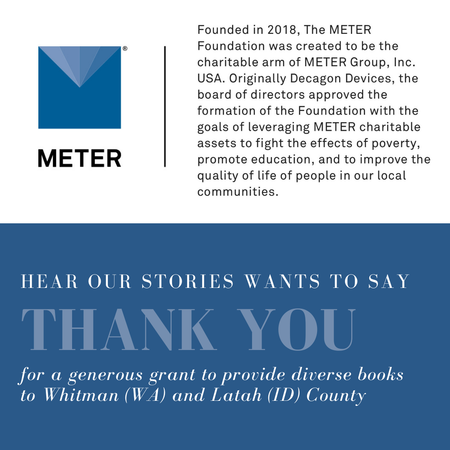OurMission
We are dedicated to tackling issues of systemic racism and implicit bias by bringing a variety of voices to the classroom through educational curriculum (novels, textbooks, and etc.). We believe schools have the ability to empower students through diversity.
Our donations go directly to providing teachers with materials which focus on underrepresented groups (race, gender, orientation, and etc.) that will help diversify and normalize the voices our students are exposed to from PreK to 12th Grade.
Diverse Authors. Diverse Characters. Diverse Stories.
Learn More
Our Focus
We help educators (PreK-12th Grade) gain access to works from differing backgrounds, so that students learn stories from many perspectives and viewpoints to close the "culture gap"
Authors
There needs to be a variety of books written by authors
of underrepresented groups, such as (but not limited to) race, color, national origin, gender, religion, and sexual orientation.
Characters
There needs to be a variety of characters
in stories read and studied by students. Protagonists should be equally representative to the society we live in.
How Bad is the Problem?
It's worse than you think
The American education system has a long-standing history of underserving certain student communities. Minority groups are hit hardest as the education system is deeply rooted in colonialism, which is primarily controlled by white voices. In one such study, it was found that Black history made up just 8-9% of history curriculums.
This bias begins early, too. In an audit, Education Week found that just 11% of Children's Books had an African/African-American protagonist, only 9% had Asian-American/Pacific Islander protagonists, and just 7% had Latino protagonists. Underrepresented characters are generally given the role of sidekick or, worse yet, villain.
This problem is perpetuated as students move on to higher grade levels. A study
of the NYC Coalition for Educational Justice found that 84% of K-5 curriculum was written by white authors, despite over 80% of the student population being non-white. High school isn't much better as "classics" often dominate the curriculum. Though they certainly have merit, already disinterested readers are often forced to read works exclusively by white men.
When you dig deeper, you find that works by, or centered around, other groups are sparse or non-existent. Typically oppressed groups such as women and LGBTQ+ are not appropriately represented.
Equally as troubling is that our white students aren't being properly taught about other cultures and lifestyles. This leads to implicit bias, which is detrimental to different societal groups.
Finally, exacerbating the problem is the continual defunding of education. According to NEA, 94% of teachers reach into their own pockets to buy supplies and curriculum. This leads to the average teacher spending $479 out-of-pocket per year. Teachers are often left with outdated materials (or none at all) to instruct the next generation of Americans.
There are a lot of solutions to combating inequality in America, but we must focus on the future of our country. The youth of America today need a strong educational foundation to help fight against these biases.






